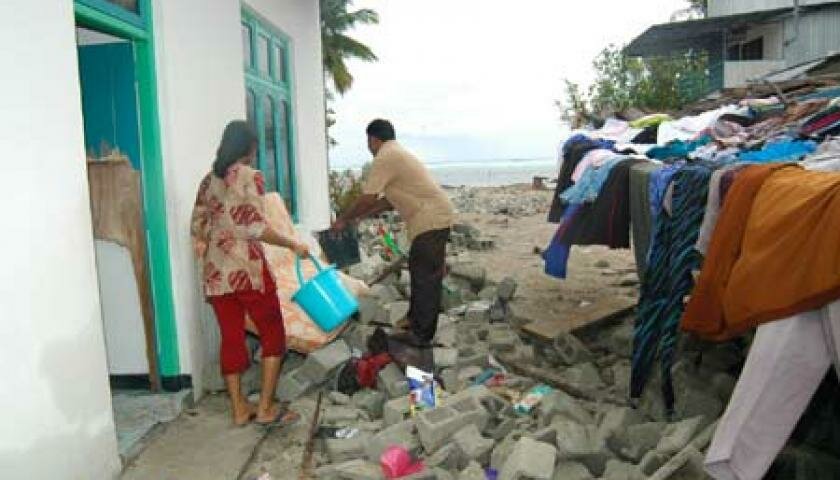
2004 Indian Ocean Tsunami As A Catalyst For Change In Maldives
13 years ago, as the day of horror drew to a close the ocean calmed, people were going about their normal lives, then the sea surged out as powerfully as it came ashore. After more than a decade, the horror of Tsunami 2004 is still unspeakable. Except for 9 islands the whole country was hit, hundreds of coastlines destroyed and as many as 100 lives lost and an additional 40 lives missing in the wall of water which rushed inland and swamped into the small low-lying islands of the Maldives. The strong Tsunami in less than 15 minutes caused so much damage it left 10 percent of the islands of the Maldives totally uninhabitable. The sufferings prompted immediate established of the National Disaster Management Centre. The sympathy, support and assistance and togetherness of the people of the Maldives were best portrayed during the disaster. Since the aftermath of the Tsunami, NDMC has been working with a commitment to build a better resilient society working closely with partners on a multitude of disaster-related angles over the years. Tsunami 2004, was a realization and the Maldives going through the experience served to fuel the need for proactive action to build resilience pushing our own boundaries leading us on this path.
Since the Indian Ocean Tsunami, till recent times there has been none or few destructive natural disasters that hit islands of the Maldives. However, the very severe cyclonic storm Ockhi which was the most recent hazard that the Maldives faced. Ockhi caused severe flooding and uprooted trees in several islands of the Maldives. However notably, people were more prepared. Preventive measures were observed to have been taken at household levels causing less damage to livelihoods.
Improving public awareness through education has been one of the key areas where NDMC works. We believe awareness is key to reduce the risks of disasters. NDMC has been effortlessly working to create awareness among the public through several programmes – including school programmes where children are presented with key disaster-related information, Tsunami preparedness drills, evacuation drills are among several others to mention. One of the key focus areas where NDMC puts heavy emphasis is on the community-based disaster risk management (CBDRM) programme- a holistic activity where an island community stands together to combat disasters. The CBDRM programme strengthens island level capacities to manage disasters through capacity building and organization. CBDRM programme has introduced community emergency response teams (CERTs), which act as the ‘disaster army’ in an island community. CERT programme helps train people to better prepare to respond to emergency situations. CERTs are trained and capacitated to combat floods (from both heavy rainfall and sea surges), fire suppressions, basic disaster medical operations and light search and rescue operations.
On this very day our country faced the worst disasters ever on its recorded history, we mark and remember the lives lost, the damages caused and the togetherness of the people to overcome the sufferings. NDMC will work closely with the communities to be vigilant and resilient against the face of disasters.
